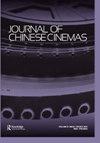Automobiles, screens and the Sinosphere
IF 0.4
3区 艺术学
0 FILM, RADIO, TELEVISION
引用次数: 0
Abstract
Abstract Film scholars writing about the Euro-American context note the strong historical and technical links between films and automobiles. Chinese cinema scholars have traced the relationship between mobile digital video (DV) recording devices and new interdisciplinary approaches to artmaking and filmmaking. However, the literature has yet to examine how this matrix of technologies operates in contemporary moving images produced in the Sinosphere. This article establishes a genealogy from cars-on-screen to screens-in-cars with examples from Jia Zhangke, Guan Hu and Huang Hsin-Yao and the lens-based works of Ai Weiwei and Cao Fei. In contrast, microfilms produced by BMW and Cadillac trade on neoliberal notions of the freedom on the open road, and the name recognition of Sinophone directors and stars to sell automobiles. Theoretically underpinning this work is Friedrich Kittler’s definition of media as techniques of transmission, processing, and archiving of information; moreover, George Seigel’s insights into the forensic qualities of media are read in relation to future evidentiary use of dashcam footage. In sum, the article focuses on mobilized vision enabled by cameras in cars, and demonstrates how these are manifest in the anxieties of fraud, the potentiality for violence, and the need to record the road.汽车、屏幕和Sinosphere
摘要电影学者在撰写关于欧美背景的文章时注意到电影和汽车之间强烈的历史和技术联系。中国电影学者追踪了移动数字视频(DV)录制设备与艺术制作和电影制作新的跨学科方法之间的关系。然而,文献尚未研究这种技术矩阵如何在Sinosphere制作的当代运动图像中发挥作用。本文以贾樟柯、管虎、黄为例,以艾未未、曹斐的镜头作品为例,建立了从车上到车上的谱系。相比之下,宝马(BMW)和凯迪拉克(Cadillac。这项工作的理论基础是弗里德里希·基特勒将媒体定义为信息的传输、处理和归档技术;此外,George Seigel对媒体法医素质的见解与未来行车记录仪录像的证据使用有关。总之,这篇文章关注的是汽车摄像头所带来的可调动的视觉,并展示了这些视觉是如何在欺诈的焦虑、暴力的可能性和记录道路的必要性中表现出来的。
本文章由计算机程序翻译,如有差异,请以英文原文为准。
求助全文
约1分钟内获得全文
求助全文

 求助内容:
求助内容: 应助结果提醒方式:
应助结果提醒方式:


